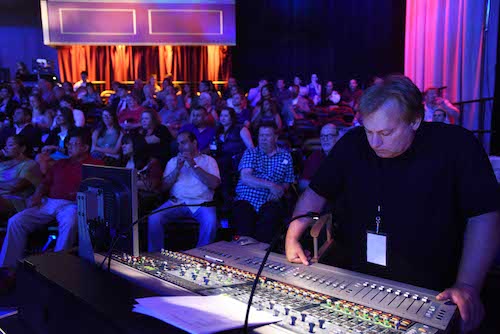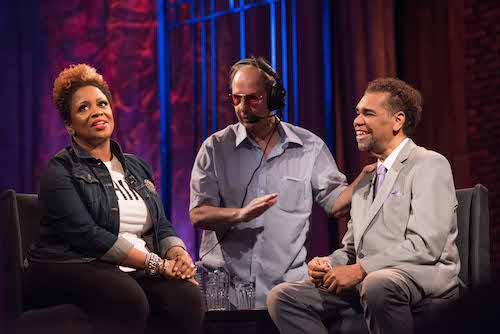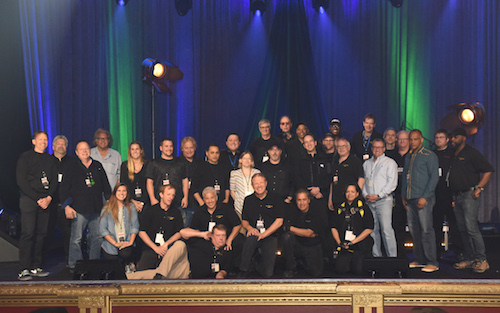“Soundstage” began presenting
musical acts on PBS stations across the country in 1974. Chicago Local 1220 has
played a key role from the start.

|

|
| Chicago Local 1220 members have produced PBS's revolutionary "Soundstage" program since 1974.
|
Performer Avery Sunshine and host Dedry Jones with engineer Dan Rozkuszka, center, taping a segment for "The Experience with Dedry Jones" in WTTW's Grainger studio.
|
“Members have immersed themselves in every aspect of the show’s production since the first airing,” Local 1220 business representative Brett Lyons said. “From cameramen to graphic designers, to the utility crew, no area was left untouched by the IBEW.”
On stage, viewers have seen major performers like Bon Jovi, Sheryl Crow, Tom Petty, Bob Dylan, and Faith Hill. It was considered revolutionary when it debuted -- long before the days of MTV.
Behind the scenes, nearly all the work is done by 32 members of Local 1220. The show is taped and produced at WTTW Chicago’s Grainger Studio, which has employed IBEW members since 1955. It is distributed nationally by WTTW, the Chicago PBS station.
“Together they produce a great product,” Business Manager John Rizzo said. “A strong contract and fierce union loyalty ensured our members’ participation in the production of Soundstage since 1974.”
“Soundstage” aired for 11 years before going on a 15-year hiatus and returning in 2000. It most recently aired in May and is scheduled to return in January; however exact dates have not yet been determined.
Each episode of Soundstage is produced live in front of an audience featuring a popular musician, and typically lasts nearly two hours.

|
| Thirty-two members of Local 1220 staff the "Soundstage" production in Chicago.
|
Musical tastes have changed through the years, but perhaps the biggest challenge for Local 1220 members is keeping up with progressing technology. They use the newest technology in video, said Ken Heinemann, 4K the Wrightway’s production manager.
“The 4K equipment ensures that Soundstage stays relevant to today’s demands of the consumer,” Heinemann said. “At the same time, it gives our members an opportunity to stay up-to-date with the ever-changing technology.”
Soundstage uses ultra-high definition technology and recording, also called 4K, because its resolution is higher than that of high definition. It provides faster setups and improved performance quality because there is less complicated wiring, Heinemann said.
Throughout the years, viewers may have noticed visual changes to the show as well. The advancements in technology allow for more camera angles and shots, improved lighting and enhanced visual effects.
Besides getting to work with the best technology available, another perk of the show is getting to work up close with famous musicians from a variety of genres.
“I always describe my job as one that gives me the opportunity to meet people and do things that everyone else will watch on TV,” said camera operator Tom Siegel, who considers meeting Steve Winwood of Traffic a career highlight.
A contract and relationships built over the years with WTTW ensures that the partnership will continue.
“A strong contract will only do so much,” Rizzo said. “It is because of a healthy partnership that we can work together like a well-oiled machine. Members with strong skill sets and a conscientious work ethic seal the deal.”
More information on Soundstage is available at interactive.wttw.com/soundstage. You can also view clips from past shows at video.wttw.com/show/soundstage.